While its detractors are taking to their keyboards and smartphones to hammer out the latest criticisms of the new Spark, there’s one thing that can’t be denied, and that’s Sea-Doo’s willingness to “put it all out there.” Seemingly untethered by the same cautious legal departments that shackle its competitors, Sea-Doo has a habit of sticking their neck out to prove a point. It’s a bold corporate philosophy, and although maybe a little foolhearty at times, you have to admire their bravery.
That’s why its with great aplomb that we spill the beans as to how the horsepower wars are going to escalate.
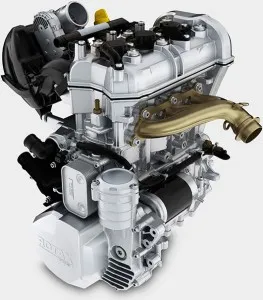
If there’s one truth, it’s that Sea-Doo hates to be on the bottom of any heap. Be it on safety features, weight savings, or performance, the company has a tendency to push and shove its way to the top by introducing innovative, if not totally unique features. Watertight storage bins, suspended seats, cruise control, no wake modes, removable access panels, fly-by-wire throttle controls, multiple tunes, and brakes are only a few.
So here we are, looking at 2014 and Sea-Doo is the caboose of the horsepower train. Despite improvements to its centrifugal supercharger, intercooler and oiling over the past four years, the single-cam Rotax 4-Tec 1.5L has remained churning out an advertised 260 horsepower (although private dyno testing would reveal a more realistic 253HP).
Meanwhile, Kawasaki’s commitment to HP domination has placed them at the top of the food chain with a staggering 310 horsepower. This most recent gain didn’t come out of merely dialing up the boost, but after a sequence of intelligent and masterfully engineered improvements to the current 1,498cc powerplant.
Major changes to the engine’s oiling system, including secondary under-piston oiling jets, a baffled oil pan, new oil rings on redesigned pistons, and larger oil journals also accompany a redesigned intake manifold, and pump for improved fuel delivery. Thicker water jackets, a knock sensor and a new pump impeller design round out the key changes translating to more horsepower and faster acceleration.
Likewise, Yamaha’s SHO (Super High Output) 1.8L has been reborn as the SVHO (Super Vortex High Output) dishing out an estimated 258-to-262 horsepower on the dyno. New pistons, a larger supercharger and 6-vein impeller wheel cranks out 60-percent more boost. A revised oiling system and larger intercooler drastically tempers internal temperatures and improves efficiency. With a redesigned 8-vein pump and 160mm impeller, the SVHO’s new power is delivered better than ever before.
So what is Sea-Doo to do? The answer is not what you might think.
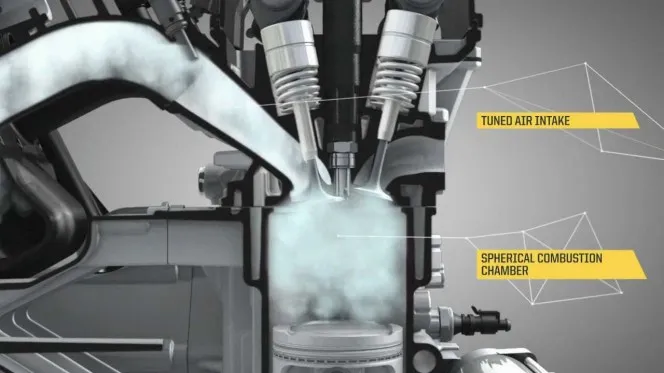
Many would claim that Rotax is sitting on a 2,000cc four-cylinder four-stroke, similar in design and appearance as the current 4-Tec, but just with one extra cylinder. Unfortunately, Rotax has no such engine in production nor in development according to our sources. But what they do have is far more intriguing:
Part of the Rotax Advanced Combustion Efficiency (ACE) family of engines, the ACE 900 engine was designed for maximum efficiency. While 90 horsepower might not sound like much, in its design holds the potential of future Sea-Doo engines. The ACE engines employ the brand’s electronic Intelligent Throttle Control (iTC), dual overhead cams (DOHC) with four valves per cylinder, dry sump lubrication and a king’s ransom in innovations.
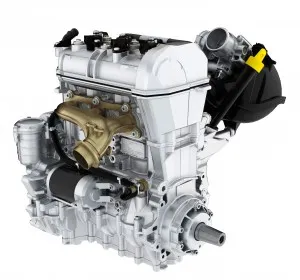
For both the ACE and larger Rotax 4-TEC 1200 engines found in Ski-Doo snowmobiles, Rotax engineers strove to maximize “thermodynamic efficiency” by employing a semi-spherical combustion chamber, a tuned intake manifold featuring long runners, and minimizing mechanical friction by using hydraulic lifters, pinpointed dry sump oiling and improved engine cooling.
Taking from these innovations, the future Rotax will remain a 1,494cc three-cylinder but will feature a completely redesigned top end with dual overhead camshafts, domed “hemi” combustion chambers (with accompanying redesigned pistons) with four valves per cylinder, a single spring-tensioned, self-adjusting timing chain, a long-runner intake manifold, a water-jacketed header-like exhaust manifold, and by dramatically reducing valvetrain friction and mass, will greedily spin up to 9,000rpm in factory trim.
At 9,000 peak rpm, this engine will thrive on additional boost, making its power potential well over that of Yamaha and well within Kawasaki’s 300-plus range. Not only will Sea-Doo firmly fix itself as a contender within the unpublished horsepower wars, but will also find itself boasting its new-found “Sea-Doo Sound” as new high-revving BRP watercraft will shriek across the water like AMA sport bikes.





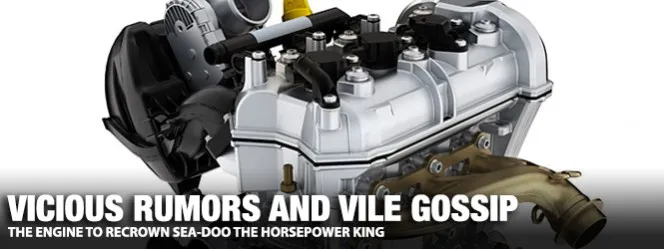

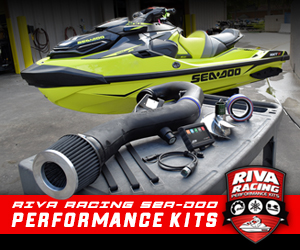


Vicious Rumors and Vile Gossip: The Engine to Recrown Sea-Doo The Horsepower King:
http://t.co/03LmTek1FL
I love this new mag. Your articals are very informative … keep them coming. Thanks
The HP war NEVER ends!! Engineering more from efficiency… SWEET!
I guess when you refer to detractors you might be referring to me, this is the farthest thing from the truth, I welcome the spark and its low price, its one more option and tool for custom 4 stroke standup builders to build what I refer to as the bark, a standup with a turbo powered ace motor, this is happening all over the globe as we speak, just looking at the spark, I see how sea doo could make the coolest 4 stroke standup ever, the vector lines of the spark are cool, I wish our race promoters would get it together and make racing a party like nascar, which would make racing and owning standups more mainstream, then the bean counters at sea doo would make there own bark and save us all alot of hastle! I don’t blame sea doo for not making a standup, I blame our race promoters and orgs for being old dogs who refuse to learn new tricks!
[…] we bring this to your attention is to reiterate our previous case that rumors of a four-cylinder Rotax being necessary to bring Sea-Doo back into the fray of […]
[…] of Performance craft. Rather than leapfrogging in technology from the current 1503 SC 4-tec SOHC to a larger displacement derivative of the Spark’s ACE 900 as we had hoped, Sea-Doo will likely opt for the safer alternative, employing tactics proven by Rotax […]